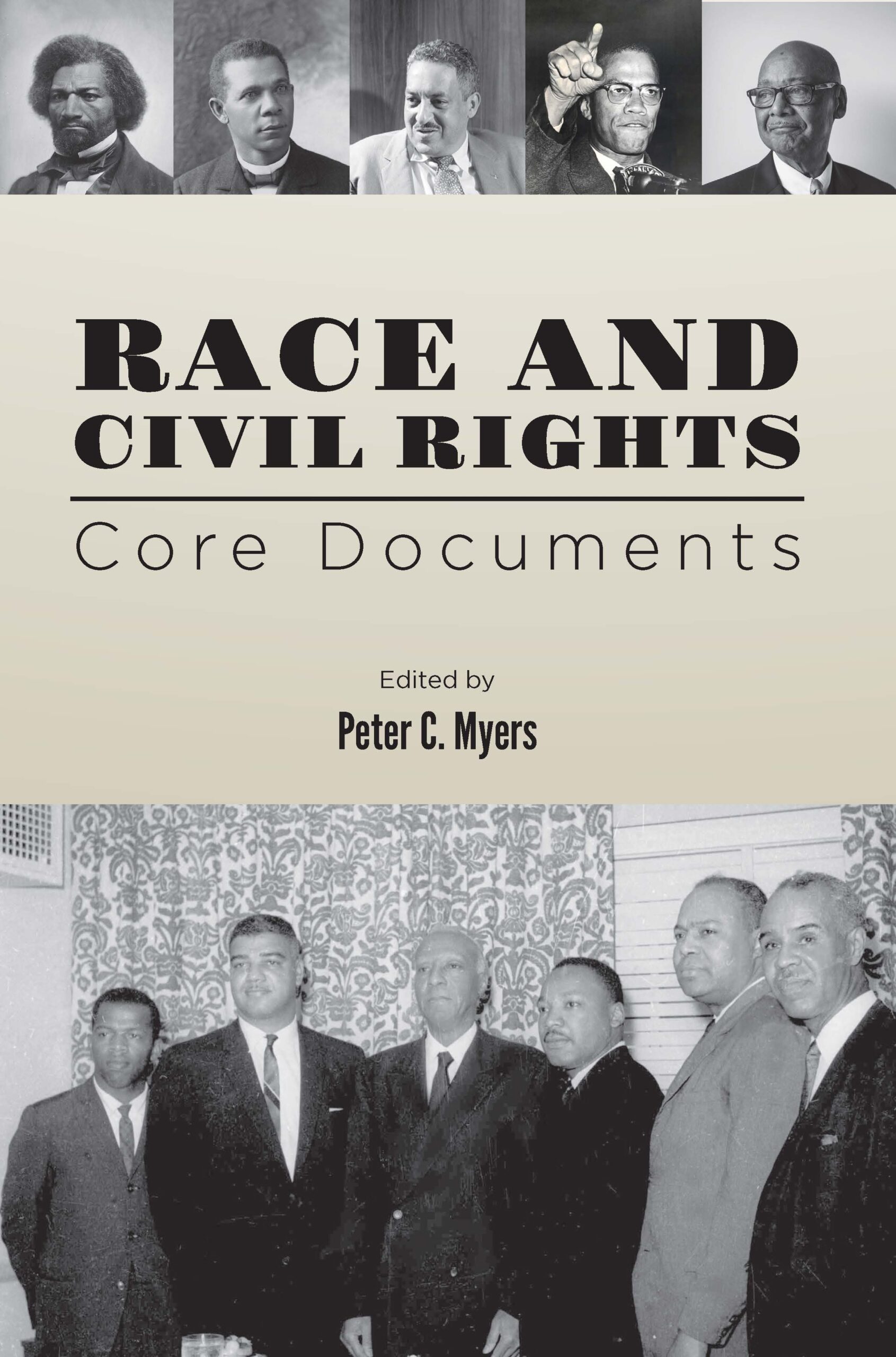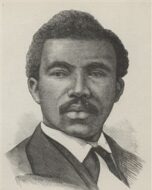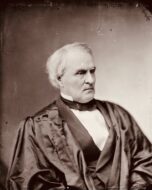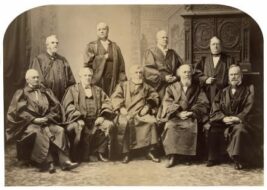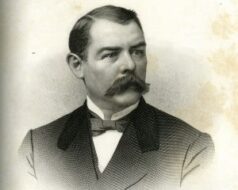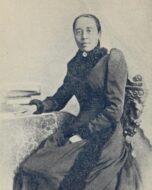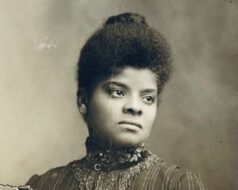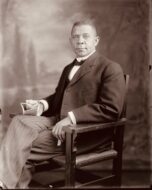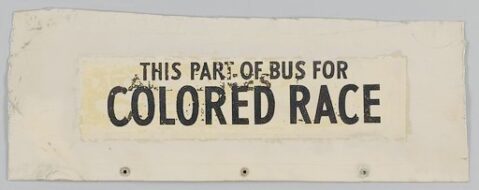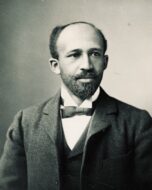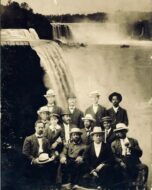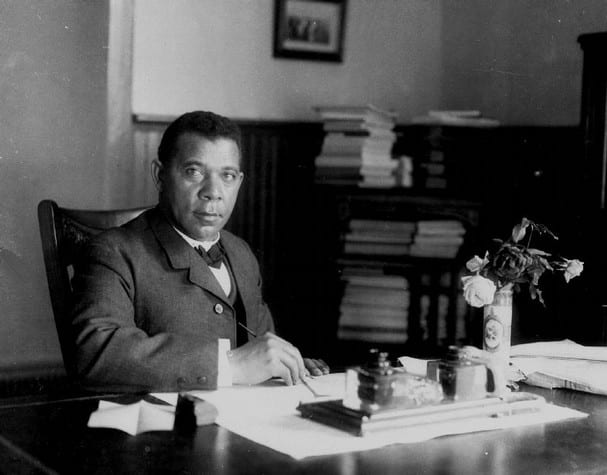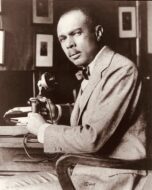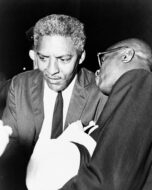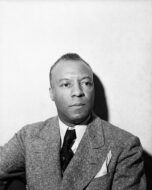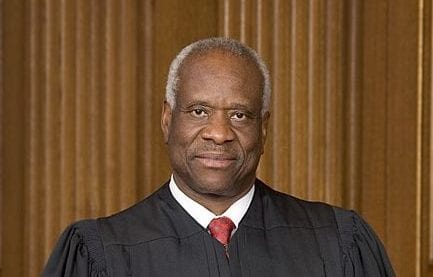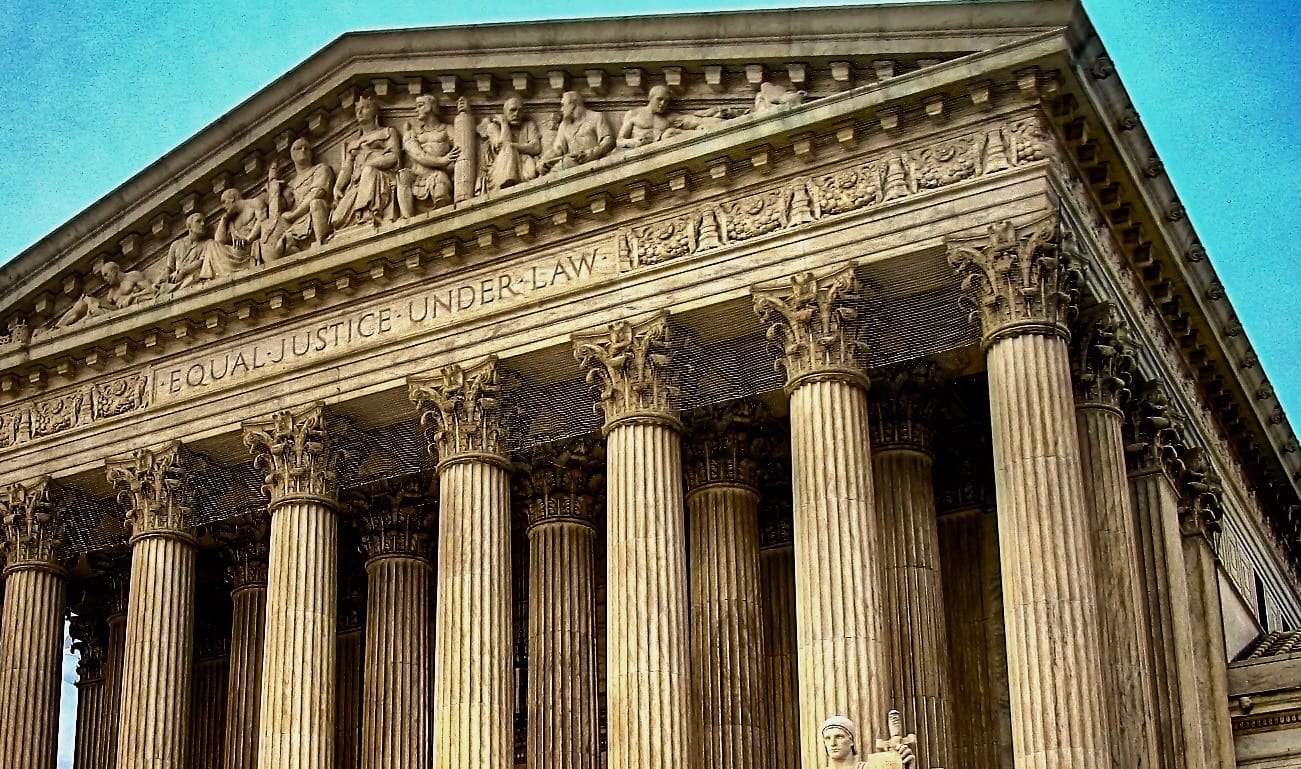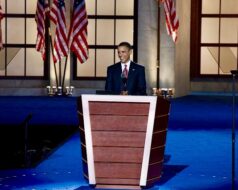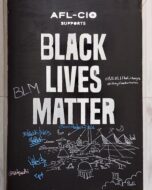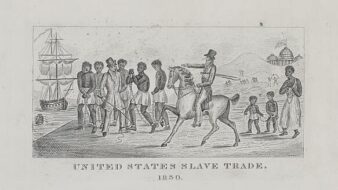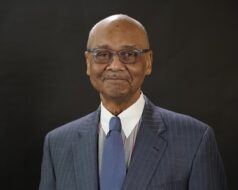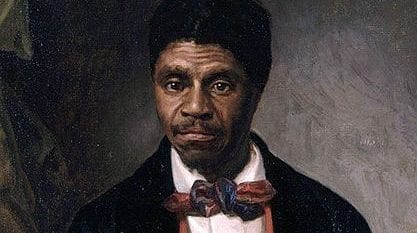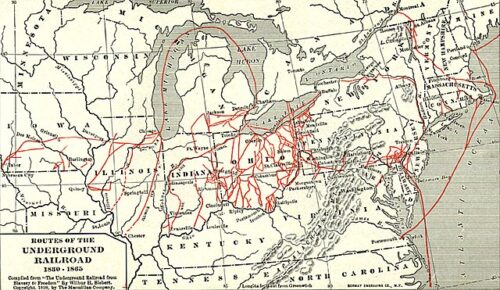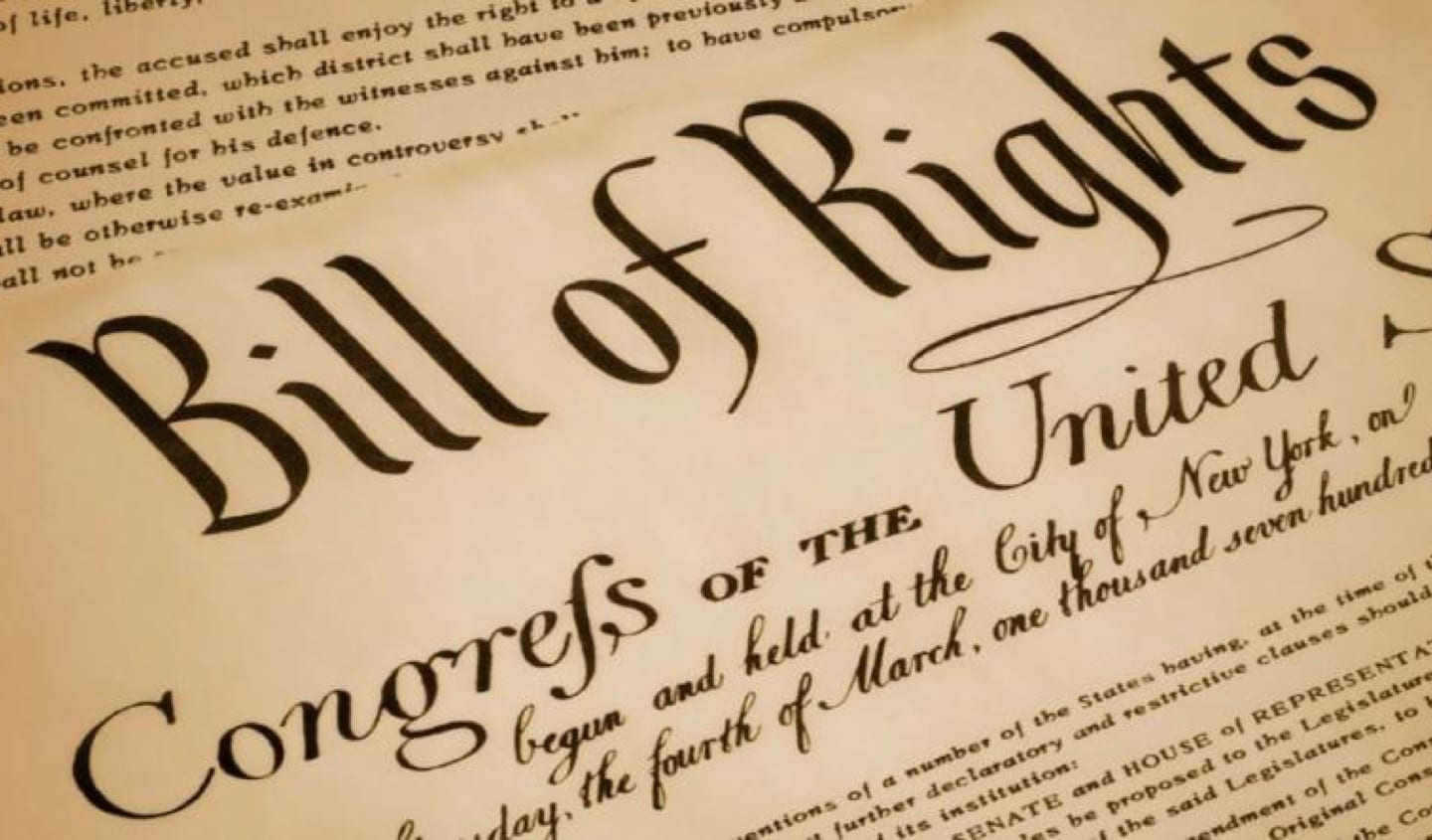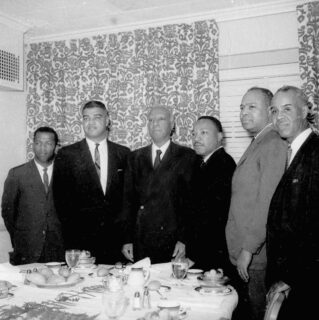
Race and Civil Rights
Speaking to the American Anti-Slavery Society in late 1863, the great abolitionist Frederick Douglass declared, “The day that shall see Jeff. Davis fling down his Montgomery Constitution, and call home his Generals, will be the most trying day to the virtue of this people that this country has ever seen.” That trial, of course, would last far longer than a day.
Among Union loyalists, a working consensus in opposition to slavery had solidified by the time Douglass spoke those words, but no such consensus was in sight regarding what should follow emancipation. Therein lay the great difficulty. For Douglass as for many of his fellow abolitionists and radical Republicans, the grand desideratum was “one glorious homogeneous people” in America—“one nation, one country, one citizenship, and one law for all.” For many others, however, the position taken by Thomas Jefferson and James Madison remained persuasive: abolition was a moral and practical imperative, but “incorporation” of those it would liberate was unacceptable. Support for slavery may have been largely sectional, but as the presence of various forms of antiblack laws throughout most northern states indicated, hostility to an interracially integrated America was powerful throughout the country. And yet, well before emancipation, it had become clear that the eminent Virginians’ preferred solution—the “colonization” of those formerly enslaved, by emigration or expatriation—itself faced insuperable obstacles. One way or another, “the sons of master and man,” as the activist-intellectual W. E. B. Du Bois would describe them, would have to live together in America.
The documents in the present volume present an extended series of reflections by black and white Americans on whether and how these two racial groups could come to coexist and thrive as fellow citizens in this country. Picking up the story at the end of the Civil War, they tell of the long effort, stretching over 150 years and continuing through the present day, to bring an end to race-centric injustice in the United States. On that objective, framed in highly general terms, there is unanimity or near unanimity among the selections. Descending from that high level of generality, however, there are much variety and lively disagreement on more specific questions of ends and of means.
What does justice mean in U.S. race relations? How might it best be achieved? Is justice sufficiently understood as the securing of equal civil and political rights, or does it require a more comprehensive antidiscrimination regime governing private as well as public actors? Should unjust discrimination be proscribed by law, or would it be better addressed by noncoercive appeals to public sentiment? How is such discrimination to be identified—by the malign intentions of actors or by the differential effects of their actions? Should efforts to achieve justice place their primary emphasis on the public airing of grievances or on self-help on the part of the aggrieved? Should their appeals remain strictly lawful and peaceful, or can they legitimately deploy extralegal or violent measures? Most fundamentally, should such efforts be directed toward the completion or the transformation of the American constitutional order?
The figures represented in these documents answered these questions in various ways that were shaped, to a degree, by the issues specific to their own times. For present purposes we can locate them in three main periods, marked by overlapping clusters of particular issues: (1) Reconstruction to the advent of the Jim Crow era; (2) the Jim Crow era through the civil rights era, spanning roughly the turn of the twentieth century to the late 1960s; and (3) the post–civil rights era, from the late 1960s through the present day.
At the dawn of Reconstruction, the overarching imperative was, as it would remain for the century that followed, the securing of equal rights under law, irrespective of race or color. The first federal Civil Rights Act, adopted by the Congress in 1866, gave concrete expression to this objective in providing that “citizens, of every race and color. . .shall have the same right, in every state and territory in the United States, to make and enforce contracts, to sue, be parties, and give evidence, to inherit, purchase, lease, sell, hold, and convey real and personal property, and to full and equal benefit of all laws and proceedings for the security of person and property, as is enjoyed by white citizens” (see Strauder v. West Virginia). Advocates clearly understood, however, that civil rights for those newly emancipated would not be secure without the right to vote. Douglass declared in 1865, “I am for the ‘immediate, unconditional, and universal’ enfranchisement of the black man, in every state in the Union. Without this, his liberty is a mockery. . . .He is at the mercy of the mob, and has no means of protecting himself.”
As Douglass’s remark indicates, blacks required protection not only against discriminatory governments but also against wrongs by their fellow citizens. The equal rights principle informing the 1866 Civil Rights Act forbids governments from favoring or disfavoring anyone based on race in the recognizing and securing of basic rights, but it does not necessarily forbid private parties from making such discriminations. To require, for instance, that all citizens be accorded the same rights of contract may be understood as according whites and blacks alike, acting in private capacities, the right to discriminate against each other based on race if they so choose. In part pursuant to this consideration, Congress moved beyond the equal rights principle. A more encompassing antidiscrimination principle informed the Civil Rights Act of 1875, which entitled all persons, irrespective of “race, color, or previous condition of servitude,” the “full and equal enjoyment” of certain privately owned public accommodations; and it imposed criminal penalties on violators. The constitutionality of the law was controversial from the outset, and the U.S. Supreme Court invalidated it in 1883 (See Elliot and Civil Rights Cases). But the antidiscrimination principle was reenacted into law in a far more ambitious version in the Civil Rights Act of 1964.
Advocates for the freed people agreed broadly on two further requisites for their security and happiness, although here, too, sharp controversies arose over some particulars. All agreed on the needs for education and material independence. For W. E. B. Du Bois and his colleagues in the Niagara movement (1905–10), an organization led by Du Bois that called for civil and social rights for African Americans, there could be no economic security absent political power, and political power could be achieved only through public agitation by members of an educated elite. Because the right of speech in this view was the key to securing all other rights, the primary need was the formation of a liberally educated elite class, both to exemplify blacks’ capabilities and to articulate their rights and grievances in the public square (See The Souls of Black Folk and “An Address to the Country“; see also A Voice from the South). Booker T. Washington, on the other hand, believed that political power would be the effect, rather than the cause, of economic power. In a post-Reconstruction climate of intense racial violence and intimidation in the Deep South, Washington maintained that a campaign to propagate protest speech would be self-destructive; the key to securing other rights was first and foremost the property right. Education, therefore, should first cultivate vocational competence and material independence among the mass of black laborers (See “Atlanta Exposition Address” and “My View of Segregation Laws“).
The U.S. Supreme Court’s ruling in Plessy v. Ferguson (1896) opened a new chapter in the history of U.S. race relations, lending constitutional authority to the regime of state-sanctioned racial segregation and discrimination, commonly known as “Jim Crow,” in the post-Civil War South. But that authority would prove ephemeral. As the twentieth century proceeded, challenges to that regime gathered force, employing older and newer strategies of opposition.
Various developments made societal conditions ripe for those challenges. In the early decades of the twentieth century, persisting injustices in southern states and increased employment opportunities in northern states brought about a large-scale migration of blacks from the South to the North, resulting in gradual increases in blacks’ political and economic power. Blacks’ service in the two world wars lent additional strength to their claims to equal rights, and the nature of the enemy in World War II clarified for many Americans the odiousness of ideologies of racial supremacy. In the 1930s and 1940s, the Harlem Renaissance, an effusion of artistic achievement among blacks, along with inspiring victories over German opponents by sprinter Jesse Owens and boxer Joe Louis, brought elevated cultural recognition and confidence to black Americans. This was the context in which the successor to the Niagara movement, the National Association for the Advancement of Colored People (NAACP), waged a sustained and highly successful campaign of courtroom challenges, culminating in landmark victories in Brown v. Board of Education (1954) and Loving v. Virginia (1967).
Challenges to the Jim Crow regime came also from outside the courtroom, and involved a broader range of issues than state-sanctioned segregation. Employment opportunity became an increasing matter of concern, along with fair treatment in public accommodations and, above all, voting rights. But the deeper issue was the reform of public sentiment that would be required to secure the gains achieved through judicial, administrative, and legislative channels, and the campaign to achieve that reform brought forth new organizations and new forms of activism. Thus arose the momentous civil rights movement of the mid-20th century, whose early hallmark was the practice of nonviolent protest, including mass demonstrations and acts of civil disobedience (See Rustin, Randolph, and SNCC).
The public attention generated by nonviolent demonstrations played a major part in the achievement of the movement’s greatest legislative successes, the Civil Rights Act of 1964 and the Voting Rights Act of 1965 (See Johnson). Yet not all of those sympathetic to the cause were persuaded of the wisdom of nonviolent direct action. For some, the enlisting of large numbers to participate in street protests, even with leaders preaching the discipline of nonviolence, carried an unacceptable risk of violence and disorder. In this view, legitimate and prudently crafted protest must remain strictly within the bounds of law and established institutional channels (See Jackson). For other critics, however, nonviolent direct action was both undignified and ineffective—undignified because it signified weakness and passivity rather than strength, and ineffective because it focused on issues of segregation and access, and failed to address the problem of poverty and the related concerns of northern urban ghetto inhabitants. Increasingly alienated by the failure, as they saw it, of the mainstream movement and the country as a whole to address these problems, this radical faction of critics, inspired by Malcolm X, took positions that linked black nationalism with revolutionary socialism (See Malcolm X, the Black Panther Party, and Carmichael).
Partly in response to its radical critics, the mainstream of the civil rights movement, led by Rev. Martin Luther King Jr., itself became increasingly radicalized after 1965. This increasing radicalism, a response also to repeated incidents of pro-segregation violence and roughly coincident with the outbreak of widespread rioting in America’s cities, brought an end to the movement in the late 1960s. But it also set the stage for the post–civil rights era, in which the major economic and cultural elements of the movement’s radical turn in the mid-1960s, with some significant modifications, have moved into what is now the mainstream of racial justice advocacy in America.
A fundamental feature of this new mainstream is an expanded conception of racial discrimination increasingly defined in terms of socioeconomic disparities between racial groups rather than by the intentions of discriminatory actors. The origins of this idea trace to the 1960s, when the Moynihan report and the Kerner Commission report explained family dissolution and urban rioting, respectively, as effects of chronic material deprivation, and civil rights leaders, including King and Bayard Rustin, agreed (See Moynihan and “Report of the National Advisory Commission on Civil Disorders“). To quell the disorders, in this view, it would not suffice simply to replace the old order of intentional discrimination with a new, present- and future-oriented system of race-neutral meritocracy. “Equal opportunity is. . . not enough,” President Lyndon Johnson insisted. The objective is “not just equality as a right and a theory but equality as a fact and equality as a result.” Disparities in socioeconomic outcomes between blacks and whites as racial groups would themselves constitute racial injustice. Black Power authors Stokely Carmichael and Charles Hamilton saw the implication clearly, characterizing racism no longer as a personal, moral vice but instead as institutional and systemic.
This outcomes-oriented understanding of justice yields a seeming paradox: Discrimination by race comes to seem necessary to overcome discrimination by race. To remediate, in other words, the persisting effects of unjust racial discrimination in the past, compensatory forms of racial discrimination in the form of preferential race classifications are thought to be required in the present. This argument may seem forceful when quick results are desired, as they were with special urgency amid the contagion of civil disorders in the late 1960s. But beyond the heated environment of those years, the expansive notion of racial discrimination, entailing the use of redistributive race classifications as remedies, has received, with some modifications, judicial warrant from the Supreme Court in a series of rulings (See Griggs v. Duke Power Company and Grutter v. Bollinger).
Beyond its socioeconomic import, the institutionalizing of race classifications in the hope of equalizing outcomes between historically favored and disfavored racial groups also holds profound cultural significance. To inscribe such classifications into law and policy is inevitably to encourage citizens to think of themselves, and of their claims on society, in racialized terms, and thus to think of their constitutional republic as a confederation of racial identity groups competing with one another for socioeconomic goods. Further, as the institutionalizing of race consciousness signifies a societal recognition of historical grievances, it creates a model for other groups to seek redress for their own identity-based grievances. On this logic the “Black Power” vision of Carmichael and Hamilton evolved into the multiculturalist “Rainbow Coalition” of aggrieved identity groups envisioned by the Reverend Jesse Jackson, with both visions opposed to the republic of one unified people under one law that Frederick Douglass saw as America’s mission and destiny.
Coming to the present day, we close with a dispiriting observation. A half century after the country seemed on the brink of final victory in the long struggle for justice in race relations, and even after the election of the first African American U.S. president (See Obama), our divisions over issues of race and identity are as deep, considered at the level of first principles, as they have ever been—and this despite the fact that the main contestants in today’s controversies present themselves as adversaries of the racism practiced in the slavery and Jim Crow eras.
Post–civil rights era divisions have come to this point because persisting socioeconomic disparities across the color line, judged by reference to the outcomes-based conception of racial justice and injustice, have fostered among one faction of self-professed antiracists a deepening sense of the fundamental illegitimacy of the U.S. political and constitutional order. Civil rights era hero and Supreme Court Justice Thurgood Marshall rendered a partial endorsement of this position in his speech on the Constitution’s bicentennial anniversary. A fuller, though still somewhat conflicted, endorsement appears in Nikole Hannah-Jones’ lead essay to the 1619 Project, while the Black Lives Matter leadership, reprising much of the spirit of the Black Panther Party, provides the most radical and uncompromising statement (See Marshall, Black Lives Matter, and Nikole Hannah-Jones).
Against these lately ascendant charges of systemic illegitimacy, dissenters have mounted a renewed defense of what in earlier eras were mainstream positions of racial justice advocacy (See Thomas, Grutter v. Bollinger [Justice Thomas dissenting opinion], and Woodson). As Supreme Court Justice Clarence Thomas and longtime community-uplift activist Robert Woodson see things, the path of genuine progress lies in a strict adherence to the principle of equal treatment under color-blind or race-neutral laws, and in the teaching of black American history, consonant with all U.S. history, as a story of self-improvement and the overcoming of differences rather than one centered on intergroup oppression and antagonism.
In their long struggle for liberty and justice for all in America, black Americans and their advocates have frequently and understandably engaged in talk of revolution. It is vital to bear in mind, however, that such talk encompasses two divergent ideas: revolution conceived as an act of completion, and revolution conceived as an act of radical transformation. Does America’s achievement of justice in the matter of race require the perfection of the Founders’ revolutionary republic, or its rejection and replacement? In the designation of our presently contending parties by the years 1619 and 1776, we see a clarification of the fundamental alternatives.
Civil Rights and the Law
- Robert Brown Elliott, Speech on the Civil Rights Bill, January 6, 1874
- Strauder v. West Virginia, March 1, 1880
- Civil Rights Cases, October 15, 1883
- Plessy v. Ferguson, May 18, 1896
- Brown v. Board of Education, May 16, 1954
- Senator Howard Smith et al., Southern Manifesto, March 12, 1956
- Loving v. Virginia, June 12, 1967
- Griggs v. Duke Power Company, March 8, 1971
- Thurgood Marshall, “Reflections on the Bicentennial of the U.S. Constitution,” May 6, 1987
- Grutter v. Bollinger, June 23, 2003
Arguments for Self-Help
- Frederick Douglass, “What the Black Man Wants,” January 26, 1865
- Ida B. Wells, “Self-Help,” 1892
- Booker T. Washington, Atlanta Exposition Address, September 18, 1895
- W. E. B. DuBois, “An Address to the Country,” August 19, 1906
- Rev. Joseph H. Jackson, “Participating in the Struggle of America,” September 1964
- Clarence Thomas, Speech to National Bar Association, July 28, 1998
- Grutter v. Bollinger, June 23, 2003
- Robert L. Woodson, “The Crucial Voice of 1776,” February 13, 2020
Controversies over Education
- Albion Tourgée, An Appeal to Caesar, 1884
- Anna Julia Cooper, A Voice from the South, 1892
- W. E. B. DuBois, The Souls of Black Folk, 1903
- Brown v. Board of Education, May 16, 1954
- Grutter v. Bollinger, June 23, 2003
- Nikole Hannah-Jones, “Our Founding Ideas of Equality and Liberty Were False When They Were Written…,” August 18,2019
- Robert L. Woodson, “The Crucial Voice of 1776,” February 13, 2020
Integration versus Separation
- Anna Julia Cooper, A Voice from the South, 1892
- Booker T. Washington, Atlanta Exposition Address, September 18, 1895
- Plessy v. Ferguson, May 18, 1896
- W. E. B. DuBois, The Souls of Black Folk, 1903
- Booker T. Washington, “My View of Segregation Laws,” December 2, 1915
- James Weldon Johnson, Along this Way, 1933
- Brown v. Board of Education, May 16, 1954
- Senator Howard Smith et al., Southern Manifesto, March 12, 1956
- Malcolm X, “The Ballot or the Bullet,” April 3, 1964
- Bayard Rustin, “From Protest to Politics,” February 1, 1965
- Stokely Carmichael (Kwame Ture) and Charles Hamilton, Black Power, 1967
- Roy Wilkins, “Voluntary Segregation—A Disaster,” March 1969
- Jesse Jackson, “The Rainbow Coalition,” Speech to the Democratic National Convention, July 18, 1984
- Barack Obama, “A More Perfect Union,” March 18, 2008
Violence versus Nonviolence
- Ida B. Wells, “Self-Help,” 1892
- Bayard Rustin, “Nonviolence versus Jim Crow,” July 1942
- Student Nonviolent Coordinating Committee, Statement of Purpose, April 17, 1960
- Malcolm X, “The Ballot or the Bullet,” April 3, 1964
- Black Panther Party, “Ten Point Program,” October 15, 1966
- Report of the National Advisory Commission on Civil Disorders, February 29, 1968
Race and Programmatic Liberalism
- A. Philip Randolph, “Why Should We March,” November 1942
- Bayard Rustin, “From Protest to Politics,” February 1, 1965
- Daniel P. Moynihan, The Negro Family: The Case for National Action, March 1965
- Lyndon B. Johnson, “To Fulfill These Rights,” June 4, 1965
- Report of the National Advisory Commission on Civil Disorders, February 29, 1968
- Jesse Jackson, “The Rainbow Coalition,” Speech to the Democratic National Convention, July 18, 1984
- Barack Obama, “A More Perfect Union,” March 18, 2008
Race and Revolution
For each of the documents in this collection, we suggest in section A questions relevant for that document alone and in section B questions that require comparison between documents.
1. Frederick Douglass, “What the Black Man Wants” (January 26, 1865)
A. Of Douglass’s various arguments in favor of suffrage for newly emancipated men, which seem most compelling, and why? Why did he regard suffrage as an imperative of national honor to enfranchise the freedmen? What ill effects did he believe blacks’ continued disfranchisement would produce? What did Douglass mean when he advised people in positions of power to “do nothing” with the freed people, but to “leave [them] alone”?
B. In calling for suffrage rights and decrying the consequences of denying them, Douglass suggested that laws should be framed with an eye toward their morally formative effects on those on whom they operate. In what ways does this suggestion inform, or fail to inform, the arguments in the rest of the documents in this collection? How, for instance, does his suggestion about stigma compare or contrast with the Supreme Court’s treatments of that issue in Plessy v. Ferguson and Brown v. Board of Education?
2. Robert Brown Elliott, Speech on the Civil Rights Bill (January 6, 1874)
A. Students should read Elliott’s speech in relation to the texts of the Fourteenth Amendment and the Civil Rights Act of 1875. Does the Fourteenth Amendment authorize Congress only to correct violations committed by state governments, or also to prohibit discrimination practiced by private citizens? According to Elliott’s argument, what kinds of actions or inactions by state governments count as violations of the Fourteenth Amendment?
B. How does Elliott’s reading of the Fourteenth Amendment compare and contrast with the readings presented by the U.S. Supreme Court in Strauder v. West Virginia and the Civil Rights Cases?
3. Strauder v. West Virginia (March 1, 1880)
A. In Strauder, the Court declared that the Fourteenth Amendment should be “construed liberally” to achieve the main purposes of its framers, which it summarized as the protection of the newly freed people from oppression by those who formerly held dominion over them. How did the Court conceive of the civil rights the amendment was meant to secure? How did the Court identify the parties against whom the freed people were to be protected? Did the Court here declare that the Constitution is “color-blind,” permitting no discriminatory classifications by race or color?
B. How does the Court’s ruling in Strauder compare or contrast with its subsequent rulings in the Civil Rights Cases and Plessy v. Ferguson? Why did the Court appear to vindicate the constitutional rights of black Americans in the one case and not the others?
4. Civil Rights Cases (October 15, 1883)
A. Why did the Supreme Court majority conclude that Congress had overstepped its constitutional powers in the Civil Rights Act of 1875? Why did the Court hold that racial discrimination by owners of public accommodations does not constitute, under the Thirteenth Amendment, a “badge or incident” of slavery? Why did it conclude that such discrimination does not constitute, under the Fourteenth Amendment, a denial of equal protection of the laws? What are the implications of the Court’s ruling concerning the effectiveness of the Fourteenth Amendment in protecting the rights of all?
B. Is the Court’s ruling in the Civil Rights Cases logically compatible or incompatible with its ruling in Strauder? Why do you think Frederick Douglass regarded this ruling as “a moral cyclone”? Do you see any relation between this ruling by the Court and the responses proposed by Booker T. Washington (See Atlanta Exposition Address and My Views of Segregation Laws) and Ida B. Wells to conditions in the post-Reconstruction era?
5. Albion Tourgée, An Appeal to Caesar (1884)
A. The primary proponents of civil rights legislation in the Reconstruction era were known as “radical Republicans,” but Tourgée seemed to think that in the main they were not radical enough. Why not? In what ways were they shortsighted, in his opinion? Why, according to Tourgée, did the responsibility for repairing the damage of slavery not belong mainly to the ex-slaveholding or ex-rebel states? Why did he believe this work of reform to be an imperative of national honor as well as national interest?
B. In their arguments concerning the possession of civil rights and the preparation for the fruitful exercise of those rights, how does Tourgée’s position compare or contrast with that of Frederick Douglass? With that of Booker T. Washington? How does his opinion concerning the primary aim of education compare or contrast with those of Washington, Anna Julia Cooper, and W. E. B. DuBois?
6. Anna Julia Cooper, A Voice from the South (1892)
A. Why did Cooper consider the elevation of black women to be more important than the leadership of eminent men in the progress of black Americans as a class? What does her argument imply concerning the importance of the family as a social institution? For what reasons did Cooper think that race conflict in America was a cause of progress? What are the implications of Cooper’s thinking concerning the possibility and desirability of racial integration in America? Why did she think civilization would reach its ultimate perfection in America?
B. How does Cooper’s thinking concerning the conditions of racial uplift and interracial harmony compare and contrast with that of W. E. B. DuBois? How does her argument concerning interracial conflict and integration compare or contrast with that of the authors of Black Power?
7. Ida B. Wells, “Self-Help” (1892)
A. What did Wells mean by “self-help”? Of the various forms of self-help she proposed, which seems potentially the most effective? Which seems least effective? Is Wells’ estimation of the power of the press consistent or inconsistent with the relative pessimism she expressed concerning the effectiveness of appealing to whites’ consciences?
B. How does Wells’ idea of self-help compare and contrast with that proposed by Booker T. Washington? In what ways do her arguments relate to those presented by the black nationalists Malcolm X and Carmichael and Hamilton during the twentieth-century civil rights era?
8. Booker T. Washington, Atlanta Exposition Address (September 18, 1895)
A. What did Washington mean by the invitation, “cast down your bucket where you are”? To whom did he address this invitation, and to what ends? Why did he reject “agitation” for social equality? What did he mean by “agitation”? By “social equality”? Did Washington reject all kinds of agitation and all types of equality? What kinds of benefits did Washington believe his educational program would yield?
B. How and why did Washington differ from Frederick Douglass on the most urgent need for blacks just after emancipation? How does his vision of education in the postwar South compare and contrast with that of Albion Tourgée? How does Washington’s assessment of the “greatest danger” post-Reconstruction-era blacks confronted compare or contrast with the position of W. E. B. Du Bois? For what reasons did Washington think his program would provide greater security for southern blacks than the program Du Bois advocated?
9. Plessy v. Ferguson (May 18, 1896)
A. Why did the Court majority consider Louisiana’s law a reasonable regulation? What public interest, according to the state and the Court, did the law promote? In what ways, according to the majority, did Louisiana’s law respect the principle of “equal but separate”? How did the Court majority and the dissenter, Justice John Marshall Harlan, disagree on the role of social equality in the case? According to Justice Harlan, what was Louisiana’s real purpose in enacting this legislation? Which position do you think is more defensible—that governmental classifications of people by race are some- times reasonable, as the Court majority argued, or that governments should never make such classifications, as Justice Harlan implied?
B. What was the Niagara movement’s response to the principle announced in Plessy? Is this ruling consistent or inconsistent with the position Booker T. Washington took on the issue of segregation (See “Atlanta Exposition Address” and “My View of Segregation Laws“)? How does the Court majority’s reasoning on race classifications in Plessy compare and contrast with a later Supreme Court’s reasoning in Grutter v. Bollinger?
10. W. E. B. Du Bois, Souls of Black Folk (1903)
A. What did Du Bois mean by the “two-ness” that he perceived in the souls of black Americans? How did he think it could be remedied? How did Du Bois think of blacks’ proper contribution to the American republic? What did he mean by his reference to the “unifying ideal of race”? How (if at all) is this notion consistent with his remark that African Americans embodied “the pure human spirit of the Declaration of Independence”?
B. How does Du Bois’s vision of blacks’ contribution to the United States compare and contrast with Anna Julia Cooper’s vision? How fair are Du Bois’ criticisms of Booker T. Washington? Did Washington not believe in civil rights and higher education? Did Du Bois not believe in vocational or industrial education? What is the real source of his disagreement with Washington? What might Washington say in response?
11. W. E. B. Du Bois, “An Address to the Country” (The Niagara Movement) (August 16, 1906)
A. According to the Niagara participants, what was the promise of the American Founding? Whom did they identify as the heroes of U.S. history, and why did they choose these particular figures? What is the vision of justice to which the Niagara men dedicated themselves? What did Du Bois mean when he referred to their cause as a battle “for all true Americans”?
B. Why did the Niagara participants and Booker T. Washington disagree on the value of protest or agitation? Which is the stronger argument? How does this Niagara movement statement of principles compare and contrast to the organizational statements of later protest groups such as the Student Nonviolent Coordinating Committee or the Black Panther Party?
12. Booker T. Washington, “My View of Segregation Laws” (December 2, 1915)
A. Does the position Washington took in this later essay signify a substantive departure from the position he took in his Atlanta Exposition speech, or was his position on segregation laws consistent throughout his career? In what ways, according to Washington, were segregation laws harmful to black people? In what ways were they harmful to white people? Was Washing- ton’s anti-segregation position also a pro-integration position? Why or why not? Washington declared “any race adjustment based on injustice finally defeats itself.” Why do you think he was confident of this? Was his confidence justified?
B. How does Washington’s anti-segregation appeal differ from the argument endorsed by the U.S. Supreme Court in Brown v. Board of Education? On the question of segregation or integration, how does Washington’s position compare and contrast with that taken by James Weldon Johnson? What might Washington have thought of the critiques of integration offered by later black nationalists such as Malcolm X and the authors of Black Power?
13. James Weldon Johnson, Along this Way (1933)
A. In what ways and why was Johnson relatively optimistic regarding black Americans’ prospects for advancement in America? Why was he confident that black Americans (even in the early 1930s) would prove resistant to the appeal of communism? If not a communist revolution, what sort of revolution did Johnson believe to be desirable? With regard to the prospect of racial amalgamation or assimilation, what did Johnson hope for, and why? What did he expect? What did he most fear?
B. How does the case for optimism as Johnson summarized it here compare or contrast to Booker T. Washington’s view of the grounds for optimism? Without at least a perception of progress, Johnson contended, blacks in the coming decades would find “only one way of salvation,” namely by making isolation into a religion and cultivating race hatred. Does this observation apply to any of the civil rights era or post-civil rights era figures represented in this collection?
14. Bayard Rustin, “Nonviolence versus Jim Crow” (July 1942)
A. By his own account, why did Rustin refuse to sit in the back of the bus? What is the significance of his reference to the white child who sat nearby? What did Rustin mean by his assurance to others, “I am protected well”? What did he mean to teach, by this story, concerning the relation of law and justice? What did he mean to teach concerning the effectiveness of nonviolent protest?
B. In the 1960s, Rustin and Malcolm X engaged in several public debates concerning the means and ends of civil rights protest. What would Malcolm X have said about the story Rustin told in this selection? How would Rustin have responded? What might Rev. Joseph H. Jackson have said about this story, and how would Rustin have responded?
15. Philip Randolph, “Why Should We March” (November 1942)
A. What was Randolph’s “double-barreled thesis” regarding the relation between the Allies’ cause in World War II and black Americans’ cause at home? In Randolph’s view, what was the purpose of a mass march on Washington? Why did he believe it would achieve its objectives? What principles of constitutional democracy informed his movement’s program of objectives? Would the achievement of those objectives be sufficient to realize Randolph’s vision of democratic justice?
B. How does Randolph’s “direct action” strategy for achieving equal civil rights compare or contrast with the strategies of other major figures in the civil rights era? How do his movement’s objectives (as stated in the Program) compare and contrast with the programmatic demands of later groups, including the Black Panther Party and Black Lives Matter?
16. Brown v. Board of Education (May 16, 1954)
A. To what extent did the Court rely on the original meaning of the Fourteenth Amendment to justify its ruling in this case? To what extent did it rely on its own previous rulings in related cases? What role did its appeal to the “modern authority” of social science research play? On the Court’s reasoning, if state-mandated segregation by race was a constitutional wrong, what was the proper remedy?
B. Did the Supreme Court in Brown v. Board of Education overrule its ruling in Plessy v. Ferguson? Is the Court’s later ruling in Grutter v. Bollinger consistent or inconsistent with the ruling in Brown?
17. Senator Howard Smith et al., Southern Manifesto (March 12, 1956)
A. Why did the signers of this manifesto think the Supreme Court had “no legal basis” for its ruling in Brown? What was their reading of the original meaning of the Fourteenth Amendment and of the Supreme Court precedents pertaining to public school segregation? What negative consequences did they expect the Court’s desegregation order to produce? Were their expectations confirmed or disconfirmed by experience? What did the signers suggest the opponents of the Brown ruling should do in response to it? To what extent did this manifesto constitute an endorsement of Senator Byrd’s call for massive resistance? In what ways, if any, did it signify an appeal for restraint in the response to Brown?
B. How do the arguments presented by black nationalists in the 1960s (see especially Malcolm X and Carmichael) compare and contrast with the anti-integration arguments presented in the Southern Manifesto? To what extent did these legislators’ stated commitment to the rule of law signify a potential common ground with pro-civil rights activists who declared their own respect for law?
18. Student Nonviolent Coordinating Committee, Statement of Purpose (April 17, 1960)
A. The SNCC statement does not explicitly mention rights. What message does the statement convey concerning the relation between justice, or equal rights, and love? Likewise, what message does it convey concerning the relation between individual rights and moral virtues in a good society? Which moral virtues does the statement identify as especially important to a just society? Why these? What does the statement suggest concerning the proper status of biblical (Judeo-Christian) religions in American public life?
B. In its appeal to love and its proclaimed foundation of “the moral nature of human existence,” how does the SNCC statement compare with the spirit of Bayard Rustin’s protest story from the 1940s? How and why was the moral spirit of SNCC modified in the transition from its founders’ leadership to that of Stokely Carmichael and his successors later in the decade?
19. Malcolm X, “The Ballot or the Bullet” (April 3, 1964)
A. Why did Malcolm X believe the civil rights movement needed a new interpretation? What was this new interpretation? Malcolm declared that he and his black compatriots were not Americans, and he rejected interracial integration as an objective. Yet he also rejected segregation, and he counseled black citizens to reeducate themselves in the prudent use of the ballot. How can these positions be reconciled with one another? How did Malcolm conceive of black nationalism? What would it demand of black Americans, and of white Americans? Is it a realistic vision? An appealing vision? Why or why not?
B. How does Malcolm’s vision of self-help compare and contrast with those of Ida B. Wells and Booker T. Washington? Do you think Malcolm would have changed his mind about Lyndon Johnson, about the two major political parties, or even about black allegiance to America had he lived to see the Johnson administration’s full program of race-related reforms (See Moynihan, Johnson, and “Report of the National Advisory Commission on Civil Disorders“)? Why or why not?
20. Rev. Joseph H. Jackson, “Participating in the Struggle of America” (September 1964)
A. What did Jackson see as the true meaning of America? What did he see as the proper means and ends of the civil rights movement? Why did he fear that black Americans would lose sight of the true meaning of their struggle? What was his criticism of the “direct-action” methods practiced by other civil rights protestors? What did he believe to be the properly constructive idea of direct action? With respect to Jackson’s contention that no minority group can prevail by forcing a direct confrontation with the majority, do subsequent events in the history of the civil rights movement support or disprove his position?
B. Which is the more defensible position: Joseph Jackson’s defense of America or Malcolm X’s repudiation of it? Also consider Jackson’s concern that direct-action protest would degenerate into a spirit of revenge and mob violence. How would the Black Power authors and the authors of the Kerner Commission report respond to this concern? How does Jackson’s defense of the rule of law compare or contrast with Bayard Rustin’s position regarding the relation between law and justice?
21. Bayard Rustin, “From Protest to Politics” (February 1, 1965)
A. Why did Rustin think the civil rights movement had achieved only limited success by 1965? What objectives, in his view, remained to be achieved? Why did he think new tactics were needed to achieve those objectives? What were those new tactics? What did he mean by his claim that the black struggle in the United States was “essentially revolutionary”? What sort of revolution did he have in mind? Rustin stated “economic interests are more fundamental than [racial] prejudice.” What evidence supports or contradicts this idea?
B. Rustin remarked, “demoralization in the Negro community is largely a common-sense response to an objective reality.” How would Frederick Douglass or Booker T. Washington have responded to this claim? How does Rus- tin’s call for blacks to move beyond protest and engage in political activism compare or contrast with Malcolm X’s call to use the ballot advantageously? How does Rustin’s affirmation of revolution compare or contrast with Malcolm’s idea of a black revolution? How does it compare or contrast with Rev. Joseph Jackson’s call for fidelity to the principles of the American Revolution and Founding?
22. Daniel P. Moynihan, The Negro Family: The Case for National Action (March 1965)
A. In Moynihan’s view of the black freedom revolution, what was the relation between equality of rights and equality of results? Why did he believe the decline of marriage among blacks would render impossible the achievement of equality of results? What was the “tangle of pathology” he saw as a result of the rise of single-parent (mostly father-absent) households? Why did the percentages of births to unmarried women begin to rise so rapidly in the post–World War II era? What kind of “national action” (if any) might provide a remedy for this problem?
B. How does Moynihan’s analysis of the primary problem compare or contrast with those of President Johnson and the Kerner Commission? Why did this problem go unmentioned in the statements of later black revolutionary groups, in particular the Black Panthers and Black Lives Matter? How does Barack Obama’s assessment compare or contrast with Moynihan’s?
23. Lyndon B. Johnson, “To Fulfill These Rights” (June 4, 1965)
A. Why, according to President Johnson, was freedom not enough to achieve racial equality? How did he conceive of the next stage in the “battle for civil rights”? What did he mean when he said that “Negro poverty is not white poverty”? What were the elements of the remedy for poverty, in Johnson’s vision? How did he weigh the nation’s responsibility, relative to the responsibility of the poor themselves, to address the problem of poverty?
B. How would Malcolm X have assessed President Johnson’s speech? What about the Black Power authors? More broadly, how does Johnson’s assessment of the condition of black Americans compare or contrast with the assessments of the authors who proposed various versions of self-help as the proper remedy for black disadvantage?
24. Black Panther Party, “Ten Point Program” (October 15, 1966)
A. The BPP program quotes the Declaration of Independence and the U.S. Constitution as the bases for claims of rights, but it also implies that the U.S. constitutional system had failed and must be rejected. Did the BPP want freedom within or outside the U.S. constitutional order? If outside, what sort of governance did it envision?
B. How does the BPP program compare or contrast with the visions of black nationalism presented by Malcolm X and the Black Power authors? In what ways does its influence show up in the Black Lives Matter statements of purpose? What objections did Bayard Rustin and Roy Wilkins raise against the BPP vision?
25. Loving v. Virginia (June 12, 1967)
A. In its ruling in Loving v. Virginia, how did the Court address the long-standing distinction in U.S. constitutional law between civil rights and social equality? In implying here that the Constitution prohibits only “invidious” racial classifications, not all racial classifications, how did the Court distinguish between the two types? What is the constitutional basis for the Court’s affirmation in this case that marriage is a fundamental civil right, and what are the further implications? How important is this ruling for the prospects for interracial reconciliation in the United States?
B. Is the Court’s ruling in Loving on the constitutional status of racial classifications consistent or inconsistent with its rulings in Brown v. Board of Education and Grutter v. Bollinger?
26. Stokely Carmichael (Kwame Ture) and Charles Hamilton, Black Power (1967)
A. The rise of the Black Power movement signified a deep factional division in the civil rights movement. Why did the authors reject claims that the mainstream movement was making meaningful progress? Why did they reject the goal of integration and the cultivation of middle-class values? What good did they believe would result from intensified race consciousness among black Americans? Did their vision of racial and ethnic nationalism represent a realistic response to the race problem in America, or was it a recipe for further civic disharmony? In the decades subsequent to the civil rights era, which of these visions—the integrationist vision or the Black Power vision—has been more influential in American culture and politics?
B. When Carmichael and Hamilton called for black self-redefinition, were they echoing or departing from W. E. B. Du Bois’s complaint about black “double-consciousness”? Which is the more defensible position: Bayard Rustin’s call for intensified class consciousness or the Black Power authors’ call for strengthened race consciousness? In the Black Power vision, is the sentiment of patriotism confined to one’s racial group, or is there space for an American patriotism akin to that endorsed by Joseph Jackson?
27. Report of the National Advisory Commission on Civil Disorders (February 29, 1968)
A. The mid-1960s was marked by the enactment of the two most important equal rights laws of the twentieth century: the Civil Rights Act of 1964 and the Voting Rights Act of 1965. And yet in 1968 the Kerner Commission declared, “Our nation is moving toward two societies, one black, one white—separate and unequal.” In the commission’s explanation, why was this happening? What did the commission identify as the root causes of the widespread rioting? Why did it believe large-scale federal efforts in employment, education, and housing could help reverse family dissolution and produce an integrated society?
B. Does the Kerner Commission report tend to refute or to support black nationalists’ mistrust of the U.S. government’s capacity to respond to racial problems? How should this report be viewed in relation to the various visions of black self-help presented in other selections in this collection?
28. Roy Wilkins, “Voluntary Segregation—A Disaster” (March 1969)
A. Why did Wilkins fear the rising support for racial separatism among younger blacks in the late 1960s? Has the spirit of “voluntary segregation” persisted in the subsequent decades? Have Wilkins’ concerns been vindicated? Was Wilkins right in claiming that university racial studies or ethnic studies programs are implicitly segregationist? Why or why not?
B. Both Wilkins and the Black Power authors claimed that a knowledge of history—U.S. history and world history—supports their respective positions. Why did they draw such different conclusions from their understanding of history? How does Wilkins’ position compare or contrast with those of Thurgood Marshall and Clarence Thomas on the relation between segregation and governmental usage of race classifications?
29. Griggs v. Duke Power Company (March 8, 1971)
A. Under the law as codified in the Civil Rights Act of 1964, should racial discrimination be defined by reference to the intention underlying a given practice or by its differential effect? If racial discrimination is defined in terms of intent to discriminate, would the efficacy of the Civil Rights Act as anti-discrimination law be weakened because intentions are often difficult to determine? On the other hand, if racial discrimination in employment is defined in terms of effects, would the result be to encourage employers to practice race-balancing in hiring decisions, and thus to negate the act’s design to eliminate the use of race classifications? How can these difficulties in implementing the law be addressed in a manner fair to all?
B. How does the Supreme Court’s Griggs ruling relate to the deeper controversies in the post-civil rights era, as represented in various selections, concerning the status of color-blindness or race-neutrality in law and the objective of diminishing or magnifying race consciousness (see Grutter v. Bollinger?
30. Jesse Jackson, Speech to the Democratic National Convention (July 18, 1984)
A. What did Jackson see as the common bond shared by the groups composing his “Rainbow Coalition”? Was the coalition he envisioned defined more by what it supported or what it opposed? To what extent did Jackson’s conception of his party as a coalition of identity groups foretell the course of the Democratic Party’s development in the twenty-first century? To what extent is it indicative of the evolution of civil rights advocacy into multi-culturalism? How well could Jackson’s “Rainbow” idea promote his stated objective of national unity?
B. How does Jackson’s effort at coalitional politics compare or contrast with Bayard Rustin’s vision of a class-based, progressive governing coalition for the post-civil rights era? How does Jackson’s conception of the United States as a patchwork quilt of identity groups compare or contrast with the Black Power authors’ conception of American society?
31. Thurgood Marshall, “Reflections on the Bicentennial of the U.S. Constitution” (May 6, 1987)
A. Why did Justice Marshall think progress in the cause of equal rights required a repudiation of the Founders’ Constitution? Is Marshall persuasive in his agreement with Justice Taney’s opinion for the majority in Dred Scott? According to Marshall, what is the case for viewing the Constitution as a “living” document? Why was Marshall confident that the progress he observed in U.S. history would continue?
B. How does Marshall’s reading of U.S. history as a story of reform compare or contrast with the readings of the nation’s history proposed by Barack Obama, Nikole Hannah-Jones, and Robert Woodson? What explains his seeming confidence in the evolving U.S. constitutional order, in contrast to the seeming pessimism expressed by the black nationalist authors and by the Black Lives Matter leadership (See Malcolm X, Carmichael, and Black Lives Matter)?
32. Clarence Thomas, Speech to the National Bar Association (July 28, 1998)
A. Justice Thomas observed “not one of us can claim infallibility.” Why did he believe it necessary to say this? Why did he consider an acknowledgment of our mutual fallibility to be the indispensable basis for constructive conversation, especially with regard to race relations? Why did he believe calls for racial loyalty are dangerous? Why did he believe it is important to emphasize the diversity and individuality among black Americans?
B. In what ways does Justice Thomas’s critique of racial loyalty signify a critique of black nationalism? When he rejected “kneeling” and “begging,” whose approach to race-related reform might he have had in mind? How does his position compare or contrast with those of Frederick Douglass and Booker T. Washington? What do his assertions of intellectual independence and his opinion of racial loyalty suggest concerning his opinion of black nationalism?
33. Grutter v. Bollinger (June 23, 2003)
A. Justice O’Connor’s opinion for the Court majority in this case held that the University of Michigan Law School had a compelling interest in maintaining a diverse student body. Why? Why in particular would racial or ethnic diversity be a compelling interest? If such diversity is a compelling interest, why did the majority insist the use of race or ethnicity classifications in admissions should be limited in duration? Why did the Court reject outright race-balancing as a state policy? According to Justice Thomas in dissent, in what ways do racial preference programs harm their intended beneficiaries?
B. In Grutter and Brown v. Board of Education how does the Court weigh these two competing objectives: (1) access to public educational institutions must be free from racial or ethnic discrimination, and (2) public educational institutions must be integrated by including representatives of various racial or ethnic groups? Is the employment of racial or ethnic classifications in public policy more closely aligned in principle with the integrationist vision of the mainstream civil rights movement or the call for heightened race consciousness by its black nationalist critics?
34. Barack Obama, “A More Perfect Union” (March 18, 2008)
A. Why did Obama say people were right to be offended by Rev. Wright’s angry comments about America? What did Obama identify as the legitimate grounds of many blacks’ anger at their condition in America? What did he identify as the legitimate grounds of resentment harbored by many whites? How did he propose to heal the anger and the resentment on both sides?
B. To what extent did Obama’s appeal to American unity resemble Jesse Jackson’s effort to assemble a governing coalition united by a shared sense of grievance? To what extent and in what ways does Obama’s vision of governance represent a continuation or renewal of President Lyndon Johnson’s Great Society program? To what extent does it signify a repudiation of the various appeals to self-help appearing in previous selections?
35. Black Lives Matter, Statements of Purpose (2016)
A. What evidence supports or contradicts BLM’s claim that black lives in America are intentionally and systematically targeted for demise? What are “the wars against Black people” to which BLM and M4BL refer? What does the pertinent evidence show with regard to the claim that Michael Brown was murdered by a police officer? Why does BLM prioritize what it calls state-sanctioned violence? How do BLM and M4BL explain and propose to address the problem of violence within the black community? According to BLM, what is the relation between race-based and class-based injustice? What systemic transformations do BLM and M4BL propose?
B. In placing special emphasis on the claims of “the most marginalized” black people, how does BLM compare and contrast with the civil rights movement of the 1960s? In what ways do the BLM/M4BL statements of purpose resemble or draw upon the Black Power and Black Panther Party manifestoes of that earlier era?
A. How does Hannah-Jones reconcile her defense of her father’s patriotism with her claims that anti-black racism is imprinted in the country’s DNA and remains endemic in America? What does she mean by her claims that black Americans are America’s true founders and the most American of all? How does she weigh the relative contributions of black and white Americans to the country’s progress? On what basis does she claim that the country’s white founders did not believe in the ideals they professed? What is the evidence for her claim that the protection of slavery was a primary motive for the American revolutionaries’ decision to seek independence?
B. How does Hannah-Jones’s idea of black American patriotism compare and contrast with that of Joseph H. Jackson? How does the vision of civic education indicated in her essay compare and contrast with the educational programs of Anna Julia Cooper, Booker T. Washington and W. E. B. DuBois? Does her characterization of the country’s origin and history tend to strengthen or to weaken the spirit of American unity that Barack Obama invoked?
37. Robert L. Woodson, “The Crucial Voice of 1776” (February 13, 2020)
A. Why do Woodson and his colleagues think a focus on 1776 in the history of U.S. origins is a moral imperative? What does 1776 mean to them? In their view, what should be the predominant themes in the telling of black Americans’ history? Why do they believe black Americans’ history is most commonly told today as a story of injuries rather than of victories? What do they see as the weaknesses of the claim that black-white disparities in the attainment of socioeconomic goods are necessarily and primarily traceable to antiblack racism?
B. Why do Woodson and his colleagues reject the 1619 Project (See “Our Founding Ideas of Equality and Liberty Were False When They Were Written”)? Which aspects of the black nationalist argument would they affirm, and which would they reject? How does their explanation of the recent condition of the black American family compare and contrast with the explanations in the Moynihan report and the Kerner Commission report? How would they assess the program of racial reform promoted by President Lyndon Johnson?
Anderson, Terry H. In Pursuit of Fairness: A History of Affirmative Action. New York: Oxford University Press, 2005.
Balkin, Jack, ed. What Brown v. Board of Education Should Have Said: The Nation’s Top Legal Experts Rewrite America’s Landmark Civil Rights Ruling. New York: New York University Press, 2002.
Bell, Derrick. Silent Covenants: Brown v. Board of Education and the Unfulfilled Hopes for Racial Reform. New York: Oxford University Press, 2005.
Blight, David W. Frederick Douglass: Prophet of Freedom. New York: Simon & Schuster, 2020.
Blight, David W. Race and Reunion: The Civil War in American Memory. Cambridge, MA: Belknap Press, 2002.
Branch, Taylor. At Canaan’s Edge: America during the King Years, 1965–68. New York: Simon & Schuster, 2007.
Branch, Taylor. Parting the Waters: America during the King Years, 1954–63. New York: Simon & Schuster, 1989.
Branch, Taylor. Pillar of Fire: America during the King Years, 1963–65. New York: Simon & Schuster, 1999.
Cleaver, Eldridge. Soul on Ice. 1968. Reprint. New York: Random House, 1999.
Collier-Thomas, Bettye, and V. P. Franklin, eds. Sisters in the Struggle: African-American Women in the Civil Rights–Black Power Movement. New York: New York University Press, 2001.
Douglass, Frederick. Autobiographies. New York: Library of America, 1994.
Du Bois, W. E. B. Dusk of Dawn: An Essay toward an Autobiography of a Race Concept. New York: Oxford University Press, 2014 (originally published 1940).
Fairclough, Adam. Better Day Coming: Blacks and Equality, 1890–2000. New York: Penguin Books, 2002.
Fairclough, Adam. To Redeem the Soul of America: The Southern Christian Leadership Conference and Martin Luther King, Jr. Athens: University of Georgia Press, 2001.
Foner, Eric. Reconstruction: America’s Unfinished Revolution. New York: HarperCollins, 2014.252 Suggestions for Further Reading
Garrow, David. Bearing the Cross: Martin Luther King, Jr., and the Southern Christian Leadership Conference. New York: William Morrow, 1986.
Garza, Alicia. The Purpose of Power: How We Come Together When We Fall Apart. New York: Random House, 2020.
Gerber, Scott D. First Principles: The Jurisprudence of Clarence Thomas. New York: New York University Press, 2002.
Graham, Hugh Davis. The Civil Rights Era: Origins and Development of National Policy, 1960–1972. New York: Oxford University Press, 1990.
Guelzo, Allen. Fateful Lightning: A New History of the Civil War and Reconstruction. New York: Oxford University Press, 2012.
Joseph, Peniel E. Waiting ’til the Midnight Hour: A Narrative History of Black Power in America. New York: Henry Holt, 2007.
Khan-Cullors, Patrisse, and asha bandele. When They Call You a Terrorist: A Black Lives Matter Memoir. New York: St. Martin’s Press, 2020.
Klarman, Michael J. From Jim Crow to Civil Rights: The Supreme Court and the Struggle for Racial Equality. New York: Oxford University Press, 2006.
Lemert, Charles, ed. The Voice of Anna Julia Cooper: Including A Voice from the South and Other Important Essays, Papers, and Letters. Lanham, MD: Rowman & Littlefield, 1998.
Lewis, John. Walking with the Wind: A Memoir of the Movement. New York: Simon & Schuster, 1998.
Litwack, Leon. Trouble in Mind: Black Southerners in the Age of Jim Crow. New York: Random House, 1998.
Magnet, Myron. The Dream and the Nightmare: The Sixties’ Legacy to the Underclass. New York: William Morrow, 1993.
Marshall, Thurgood. Thurgood Marshall: His Speeches, Writings, Arguments, Opinions, and Reminiscences. Chicago: Chicago Review Press, 2001.
McPherson, James M. The Abolitionist Legacy: From Reconstruction to the NAACP. Princeton: Princeton University Press, 1976.
McPherson, James M. The Struggle for Equality: Abolitionists and the Negro in the Civil War and Reconstruction. Princeton: Princeton University Press, 2014.
Moses, Wilson Jeremiah. Creative Conflict in African American Thought. Cambridge: Cambridge University Press, 2004.
Moses, Wilson Jeremiah. The Golden Age of Black Nationalism, 1850–1925. New York: Oxford University Press, 1988.
Myers, Peter C. Frederick Douglass: Race and the Rebirth of American Liberalism. Lawrence: University Press of Kansas, 2008.Suggestions for Further Reading 253
Norrell, Robert J. Up from History: The Life of Booker T. Washington. Cambridge, MA: Harvard University Press, 2011.
Patterson, James T. Freedom Is Not Enough: The Moynihan Report and the Struggle over Black Family Life—from LBJ to Obama. New York: Basic Books, 2012.
Rustin, Bayard. Time on Two Crosses: The Collected Writings of Bayard Rustin. New York: Cleis Press, 2003.
Sowell, Thomas. Civil Rights: Rhetoric or Reality? New York: HarperCollins, 1985.
Sowell, Thomas. Discrimination and Disparities. New York: Basic Books, 2019.
Thernstrom, Abigail, and Stephan Thernstrom. America in Black and White: One Nation, Indivisible. New York: Simon & Schuster, 1999.
Thomas, Clarence. My Grandfather’s Son: A Memoir. New York: HarperCollins, 2008.
Tourgée, Albion. A Fool’s Errand. By One of the Fools. New York: Fords, Howard, and Hulbert, 1880.
Washington, Booker T. Up from Slavery: An Autobiography. 1901. New York: Carol Publishing, 1993.
Wells, Ida B. Crusade for Justice: The Autobiography of Ida B. Wells. 1970. Reprint. Chicago: University of Chicago Press, 2020.
Woodson, Robert L. Lessons from the Least of These: The Woodson Principles. Brentwood, TN: Bombardier Books, 2020.
Woodward, C. Vann. The Strange Career of Jim Crow. 1955. Reprint. New York: Oxford University Press, 2001.
X, Malcolm. The Autobiography of Malcolm X (As told to Alex Haley). New York: Random House, 1964

